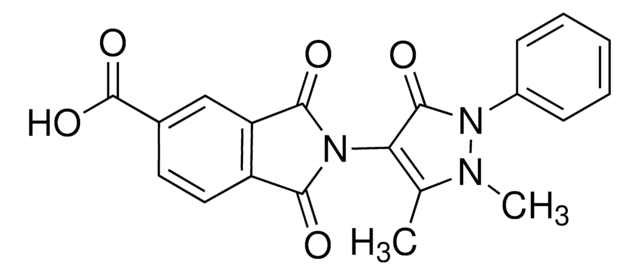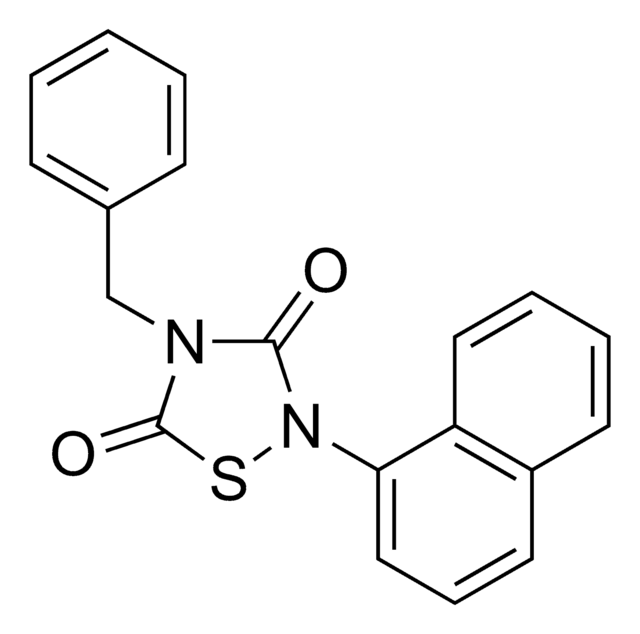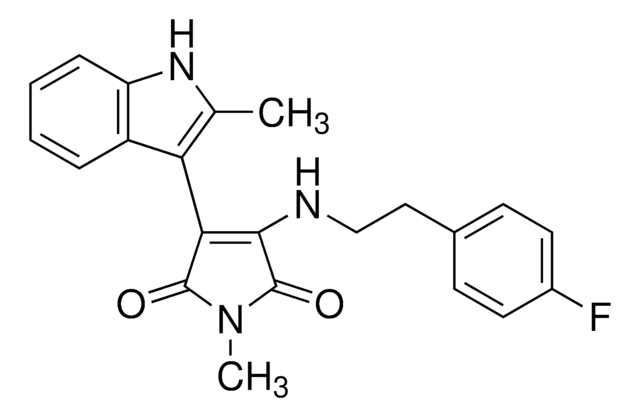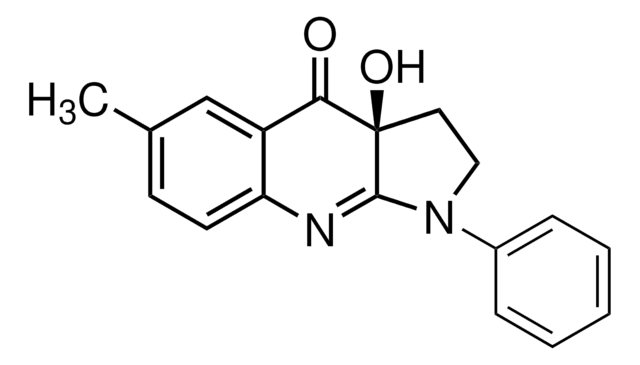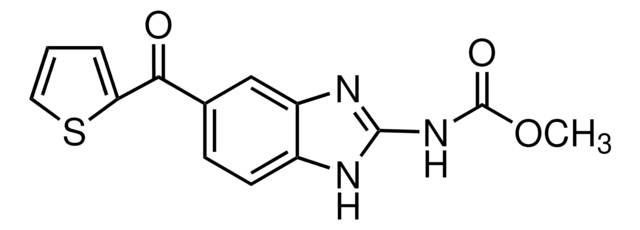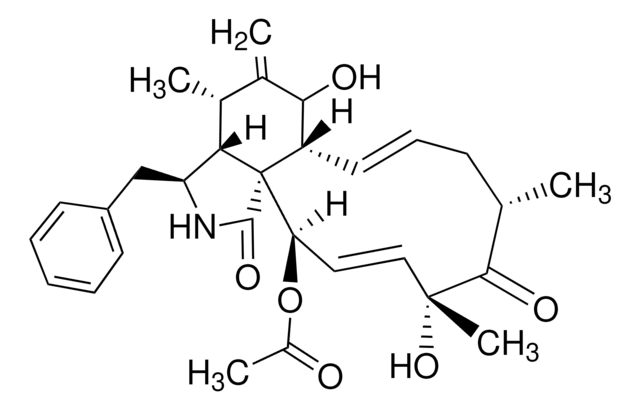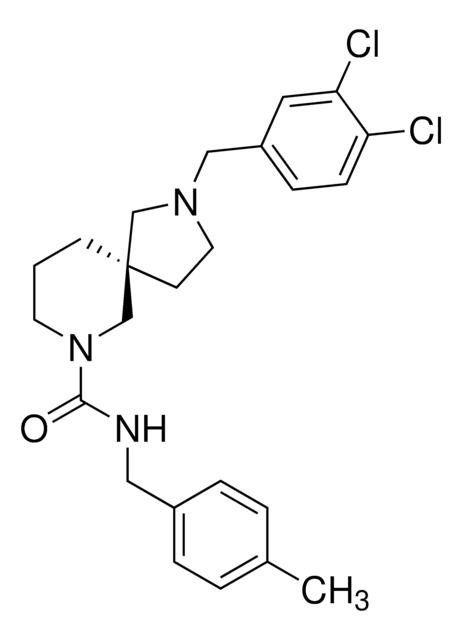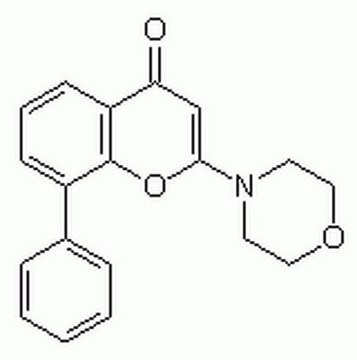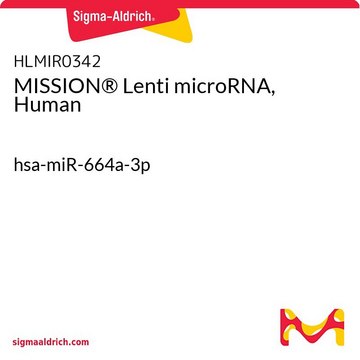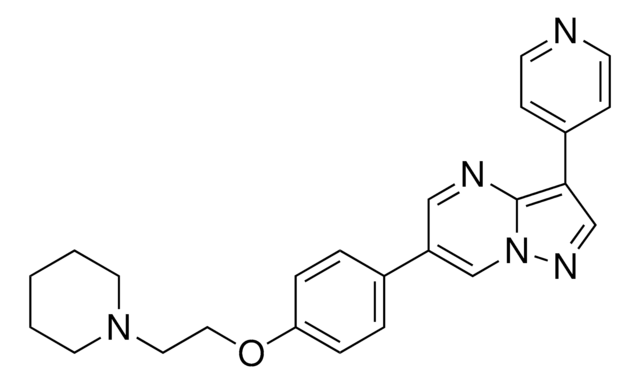SML3126
BI-2852
≥98% (HPLC)
别名:
(3S)-2,3-Dihydro-5-hydroxy-3-[2-[[[[1-[(1-methyl-1H-imidazol-4-yl)methyl]-1H-indol-6-yl]methyl]amino]methyl]-1H-indol-3-yl]-1H-isoindol-1-one, (S)-5-Hydroxy-3-(2-(((1-((1-methyl-1H-imidazol-4-yl)methyl)-1H-indol-6-yl)methylamino)methyl)-1H-indol-3-yl)isoindolin-1-one, BI 2852, BI2852
登录查看公司和协议定价
所有图片(1)
About This Item
推荐产品
质量水平
方案
≥98% (HPLC)
表单
powder
颜色
white to beige
溶解性
DMSO: 2 mg/mL, clear
储存温度
2-8°C
SMILES字符串
O=C1C2=C([C@H](N1)C3=C(NC4=C3C=CC=C4)CNCC5=CC6=C(C=C5)C=CN6CC7=CN(C=N7)C)C=C(C=C2)O
InChI key
JYEQLXOWWLNVDX-PMERELPUSA-N
生化/生理作用
BI-2852 is RAS inhibitor that binds RAS switch I and II (SI/II) pocket in both the active and inactive forms (GCP-/GDP-bound KD in μM = 0.74/2.0 (KRAS-G12D), 7.5/1.1 (KRAS), 0.57/2.5 (HRAS), 1.3/8.3 (NRAS)). BI-2852 inhibits RAS-mediated signaling and proliferation of KRAS-G12C-bearing NCI-H358 lung cancer cells (EGF-induced pERK IC50 = 5.8 μM; GI50 = 6.7 μM in soft agar with low serum) by blocking KRAS interactions with GEF SOS1 (GDP-bound G12C/G12D IC50 = 450/260 nM, GTP-bound Wt/G12C/G12D IC50 = 490/360/490 nM) and effectors CRAF (GTP-bound Wt/G12C/G12D IC50 = 1740/80/770 nM) and PI3Kα (GTP-bound Wt/G12C/G12D IC50 = 250/100/500 nM).
RAS switch I and II (SI/II) pocket-targeting inhibitor against RAS-mediated signaling and proliferation by blocking KRAS interactions with GEF and effectors.
储存分类代码
11 - Combustible Solids
WGK
WGK 3
闪点(°F)
Not applicable
闪点(°C)
Not applicable
历史批次信息供参考:
Reply to Tran et al.: Dimeric KRAS protein-protein interaction stabilizers.
Dirk Kessler et al.
Proceedings of the National Academy of Sciences of the United States of America, 117(7), 3365-3367 (2020-02-13)
Dirk Kessler et al.
Proceedings of the National Academy of Sciences of the United States of America, 116(32), 15823-15829 (2019-07-25)
The 3 human RAS genes, KRAS, NRAS, and HRAS, encode 4 different RAS proteins which belong to the protein family of small GTPases that function as binary molecular switches involved in cell signaling. Activating mutations in RAS are among the
The small molecule BI-2852 induces a nonfunctional dimer of KRAS.
Timothy H Tran et al.
Proceedings of the National Academy of Sciences of the United States of America, 117(7), 3363-3364 (2020-02-13)
Rachel Cooley et al.
Wellcome open research, 5, 20-20 (2020-06-27)
Targeting the interaction of proteins with weak binding affinities or low solubility represents a particular challenge for drug screening. The NanoLuc â ® Binary Technology (NanoBiT â ®) was originally developed to detect protein-protein interactions in live mammalian cells. Here we report
我们的科学家团队拥有各种研究领域经验,包括生命科学、材料科学、化学合成、色谱、分析及许多其他领域.
联系技术服务部门